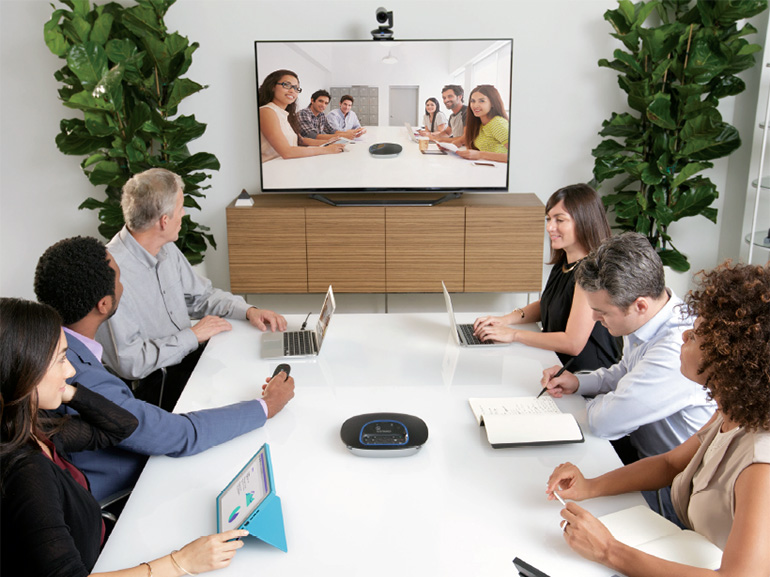There are generally considered to be five elements that are critical to the success of a room based video conferencing environment. Here are mine based on personal order of importance:
1. Ease of use
Working on the principle that most people would agree that a familiar interface will win over something less intuitive every time. Then a familiar user experience, preferably with a very obvious, press this one button to get into my call type user interface.
2. Availability of others to call
A video conferencing meeting room is only of any use if you’ve got someone to ring. As a result low-cost, highly available solutions, with lots and lots of users is vital if these to the success of any video installation. In the past, the cost of the technology was prohibitive for mass deployment, but today that is no longer true. Of course, the ability to call others has to fall under the ease of use element – if it’s too complicated to make a call, people simply will not.
3. Audio quality
The ability to hear and be heard clearly is the basis of all communications, and high-quality speakers and mics are of the utmost importance. Microphones are surprisingly good at picking up everything in the room, even the things you don’t want to hear like keyboards, HVAC, laptop fans and the million other sounds in the room. High-quality audio solutions need to not only pick up the voices but also clear out as much of the “noise” as possible.
4. Video quality
For a blog about the importance of different criteria for video conferencing, it is perhaps a little odd to see the quality of the video component so low the ranking. There are good reasons for this, but before I discuss those, let’s discuss what we define as good quality.
There are several criteria in which video quality can be measured. Resolution, color accuracy, frame rate, latency, jitter and artifacts. Each affects a video call in different ways:
- Resolution is simply defined as the number of pixels on the screen, typically measured in the modern era as something like 720p or 1080p, and 4k resolutions are emerging but are still rare in the video conferencing world. The higher the resolution, the sharper the image. All things being equal that is a good thing, but as is so often true, life is a compromise, with the result that many suppliers would rather compromise the image sharpness for other qualities.
- Color accuracy is generally pretty good in modern video solutions when lighting is also good.
- Frame rate and latency often work in tandem. The higher the frame rate, the smoother and more natural the participants appear. This also lowers the latency, making it much less likely for each party to cross talk each other.
- Jitter and artifacts are caused when the bandwidth required for a call is greater than the bandwidth available and on noisy networks. This causes pixelization, and a mismatch between the mouths moving and the voices.
Ultimately, to be successful, video communications should be as clear as if we are looking through a window at the other participants. Anything that causes the users to have that spell broken is a problem.
5. Data collaboration abilities
For many users, the ability to collaborate on documents in real time is more important than the video aspect. For me the emotional connect of a video call, rather than the data aspect of a data collaboration session is more important. I am however very aware that for many the opposite will be true.
Conclusions
I think the video conferencing market is at an inflection point. Logitech approaches video conferencing with the same ease of use as plugging in a webcam while also delivering the high-quality audio and video experience the company is known for. By bringing low-cost video devices to market, we hope to enable mass deployment, and the high quality audio and video that will satisfy our customers’ needs to communicate easily and effectively in any video call.
The number of dedicated video conferencing devices have been in decline for a number of years. I think with the new emphasis on solving user issues, not just chasing some specifications we could well see explosive growth in this sector in 2017 and beyond. And as such, I for one, am delighted to be a part of it all.





